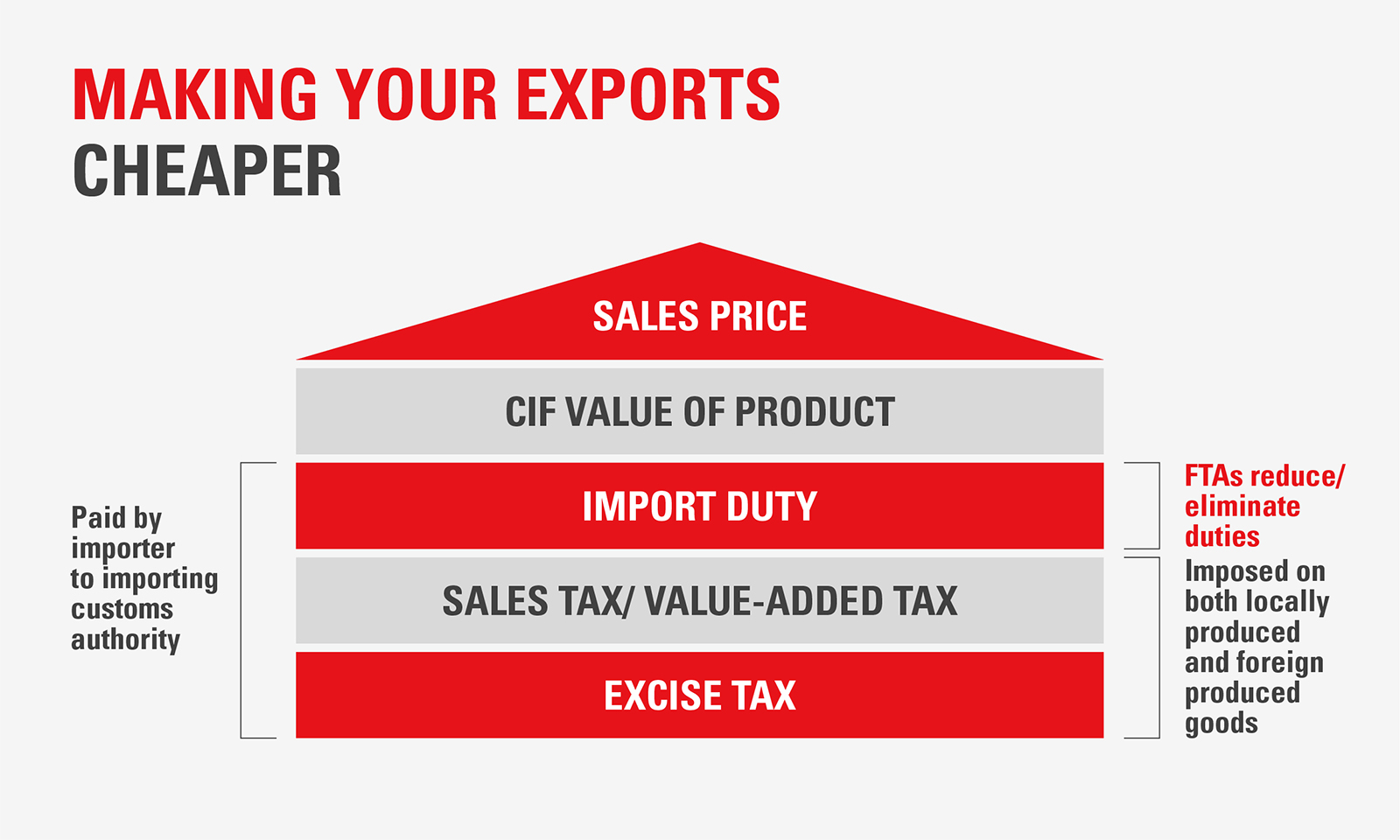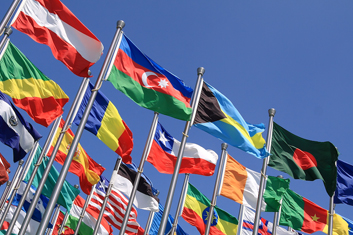Enhancing conditions for cross-border trading of goods
Goods refer to any merchandise, product, article or material that may enter an importing country under non-discriminatory conditions. They are generally bounded by measures such as tariffs, tariff rate quotas (TRQs) and quantitative restrictions (QRs).
Singapore’s FTAs cover preferential tariffs (customs duty) that are not inclusive of other internal taxes for goods. Preferential tariff elimination or reduction is either immediate or phased. Qualification for preferential tariffs largely depends on meeting the required Rules of Origin criteria stipulated by the FTA’s Legal Text.
Tariff commitments for goods are set out in each member’s schedules of concessions on goods. The schedules represent commitments not to apply tariffs above the listed rates.
Making your exports cheaper
In a typical pricing model, FTAs can potentially reduce one of the cost components – import duties.
This makes your exports more competitive than exporters from non-FTA partner countries.

Easier entry into your export market
FTAs give you preferred access to your export market with a freer flow of goods.
Beyond import duties, FTAs can allow for increased export quotas, granting you a greater advantage as an exporter from an FTA member country.
Ensuring business stability
Import duties are largely dependent on individual countries’ trade policies. Countries have the right to increase and reduce import duties when necessary. Such decisions can severely affect long-term exports into these markets.
However, FTA preferential rates are legally binding and signatory countries have to abide by the concessions offered. This ensures stability for exporters in the long run.
Example of volatile import duties:
Exports of Gold Dore Bars into India
| January 2013 | June 2013 | January 2015 | ASEAN–India FTA | |
|---|---|---|---|---|
| Import duty | 6% | 8% | 10% | 0% |
| Export value | $100,000 | $100,000 | $100,000 | $100,000 |
| Duties payable | $6,000 | $8,000 | $6,000 | $0 |
How to use FTAs for Trade in Goods
Step 1: Determine the relevant FTAs for the target market
- Search for your target market in the list of FTAs, or use the Tariff Finder website to find your product.
Step 2: Check if your product benefits from lower tariffs
- You may use the Tariff Finder to search for the Harmonised System (HS) code of your product in the destination country.
- Determine the Harmonised System (HS) code of your product
- Compare the tariff rate for your Singapore-originating product to the generic rate applicable to most countries (i.e. MFN rate).
- Check the FTA’s Rules of Origin (ROO) if your product qualifies as “Singapore-originating”.
Step 3: Choose the relevant FTA
- Choose the relevant FTA with the highest tariff savings, and follow the specified certifying procedures
- If a Preferential Certificate of Origin (PCO) is required:
- Submit the relevant documents to Singapore Customs.
- Send the PCO to the customer for presentation to importing authorities.
- If self-certification is required by your chosen FTA:
- Follow self-certification procedures as per FTA requirements.
- If a Preferential Certificate of Origin (PCO) is required:
Step 4: Next Steps
- Once your FTA application is approved, you will secure a tariff reduction.




